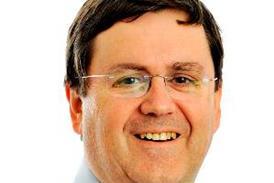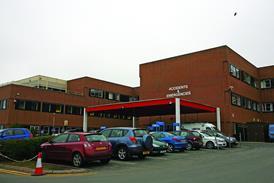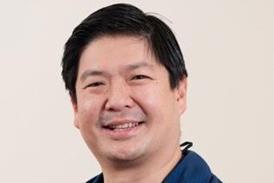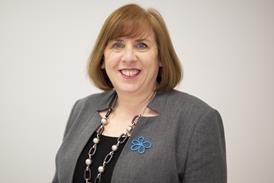Medical leaders need time, the right structures and the faith of their trust boards to be affective in the role, says Gill Gaskin
It is timely for the King’s Fund chief executive Chris Ham to raise the profile of medical leadership. There are real challenges ahead: not only the financial challenge − we’ve moved on from the “Nicholson challenge” to the decade of austerity − but also the need to restore public faith in the quality of care in our hospitals, underpinned by the need to deliver services that universally merit public faith.
‘A complex acute care organisation is more like an armada than an aircraft carrier’
The now metaphorical white coat should be helpful in that. The research by the King’s Fund and Birmingham University is about the journey to medical leadership and accountability that started in the when I qualified medical school. We do need to know if we are on the right journey. If we are, then we need to know how to speed it up.
I want to know if my last 11 years of work have been in vain − as clinical director, then the equivalent of a divisional director, and now as a medical director, with my medical career options narrowing with time. I’m past the point of no return on being a successful researcher, educationalist or international clinical expert, though I’ve had my moments. My eggs are pretty firmly in the medical leadership basket now, and I really don’t want to have been part of a failed experiment.
I’m happy to see the report’s conclusion is that we need to put our foot on the accelerator rather than get out of the car − though maybe we need to trade up to a much faster vehicle.
As a medical leader I am relieved that our value is affirmed. The research demonstrates a strong association between medical engagement scores and externally assessed organisational performance (what on earth would it have meant if there was no relationship?). The report reminds us too that our senior doctors exert influence, whether they intend to or not, and whether or not their agendas are aligned with the aspirations of the organisation. So it would be crazy not to find a way to use that to influence for the good of the organisation and even more importantly for the good of the patients.
But I’m disappointed to reflect on the pace of progress and the patchiness of the impact. The research tells us that in spite of the progress we have made in creating clinical leadership titles, there has been little evidence of clinically led service redesign and reconfiguration, at least on the macro scale. This is particularly disappointing. And there is a nagging concern that professional leadership promotes stability rather than change.
A real step change
First, what does the research tell us to do about organisational form?
The report makes clear that the lack of a prescriptive model has led to a wide diversity of approaches in the secondary care world. The research is unable to demonstrate superiority of one form over another − it can’t tell us whether a handful of divisions or a larger number of directorates is the optimum. Perhaps there isn’t a one size fits all solution.
‘In the current climate it’s a tough demand to make of boards − to let go more and trust their doctors’
Structures that are determined clinically seem to be better than those designed for organisational convenience (which I assume might refer to grouping services to make the budget a similar size in every patch). This makes perfect sense to me as a clinician − a service line or directorate arranged around a particular group of patients is the best way to persuade frontline staff that their organisational form has clinical relevance and to bring different professional groups together.
The researchers are curious to dig deeper into the impact of service line management in organisations like University College London Hospitals, my organisation, where I am one of three “operational medical directors” on the board of directors responsible for large swathes of clinical services. I have six pairs of divisional managers and divisional clinical directors reporting to me. The clinical directors are each allocated five PAs of time for the role.
Have we become a “managed professional business” and moved away from the traditional model of professional bureaucracy impervious to management intervention? I would like to think at our best we combine the benefits of clinical leadership and skilled management. I passionately believe devolution to clinically led, clinically coherent, multiprofessional units, working under the rigour of service line management, holistically responsible for quality, operational performance, workforce management and financial performance provides the right balance of freedom to act, with accountability, and builds into management the inalienable requirement to deliver on quality.
In the current climate it’s a tough demand to make of boards − to let go more and trust their doctors − but I see nothing in this report to say hold back.
Nature and number of roles
The King’s Fund’s research says more medical leaders are needed. Selection processes are improving, but often have only one candidate to choose from. How do we make the roles more attractive? The need for adequate time, and the value of working alongside a general manager in a partnership of mutual respect is affirmed − but clinical leaders also need to at least preserve their status before colleagues.
They need support in taking career risks, freedom to apply their clinical perspective and dignified routes to re-entry to clinical practice where necessary without it looking like the remedial class. They need a network of supportive peers for the lonely moments. Roles must not be poisoned chalices. It must not be a case of bringing the doctors in as a last resort when it’s getting too difficult and then damning and dropping the model when it doesn’t achieve the miraculous.
‘We have a picture of the medical leader standing in a kind of no man’s land’
The report recognises that doctors in leadership roles need to morph from being keen amateurs to skilled professionals, which means more time commitment − on both the work of leadership and on training and development. I am thankful for the Faculty of Medical Leadership and Management but it’s too early to assess its likely impact. We all need to part of ensuring its success. Of course, it’s worth reflecting that we when we make comparisons with professional managers we often simply mean full-time managers rather than those who are rigorously trained and credentialed.
Thirdly, this is about more than divisional leaders or medical directors or even clinical directors. It is about medical leadership.
Acute armada
Distributed leadership is hailed: I like the statement that a complex acute care organisation is more like an armada than an aircraft carrier. Leadership is needed in each and every clinical microsystem. Medical leadership needs to be large-scale, distributed and visible at the frontline.
And yet the research tells us that leaders of directorates and divisions aren’t connecting fully with consultants in wholly clinical roles. I recognise that. We have a picture of the medical leader standing in a kind of no man’s land where the fire can come from both sides. We need to help clinical leaders to relish it as a special and privileged place, where they are the mediators, the translators into what I’ve heard spoken of as “purpose at the bedside”.
We also need to give them time to spend with colleagues and time in the clinical areas they lead, as a necessity not a luxury. I fully support this “engagement gap” being an area for future research but in the meantime we need some empirical actions.
Fourth, there is the question of why triumvirate of doctor, nurse and manager don’t find favour (and where are the allied health professionals and scientists?) How do we best ensure a three-way alignment of purpose? If we are to achieve our quality goals and avoid pushing quality and financial management into opposite corners we must crack this. I fully support this as another area for future study.
Finally, perhaps because of the timing of the research, it tells us little about medical leadership across organisational boundaries and in integrated systems.
What next?
We don’t have another 30 years to get this right. What are the threats to making accelerated progress?
‘Too much to do, too little time to do it. It is salutary that the researchers found it hard to pin down clinical leaders to interview’
First, lack of conviction. Will nervous boards really relinquish authority to doctors? It’s the antithesis of the “command and control” approach that so often prevails in troubled times. Will boards that have little clinical representation in their non-executive members − seemingly the majority − really get it? Is there enough evidence here to persuade them that this is the way to go? Possibly not.
Second, there is the danger of lack of continuity. The report notes how organisations with change at the top often rearrange the deckchairs in terms of clinical leaders. It’s no coincidence that UCLH has progressed its medical leadership model while it has had the same CEO in place for well over a decade.
Third, there is the real problem of lack of concentration − too much to do, too little time to do it. It is salutary that the researchers found it hard to pin down clinical leaders to interview them. Clinical leadership needs time and space.
So having read this, I find myself asking what will I do differently tomorrow? That’s my role as a medical leader isn’t it? To make a difference?
I will redouble my efforts to promote the cause of medical leadership, of devolved authority and accountability, and to say, yes there are costs in terms of time and training, but trust us to repay the investment. I will also redouble my efforts to seek out the next generation of leaders and nurture them.
Very practically, I will increase my efforts to get out among clinical teams and help break down that engagement gap. What will you do differently?
Dr Gill Gaskin is medical director of the specialist hospitals board at University College London Hospitals Foundation Trust























3 Readers' comments